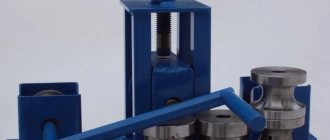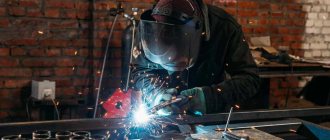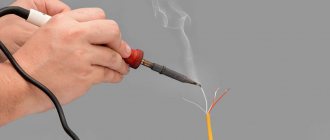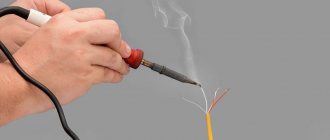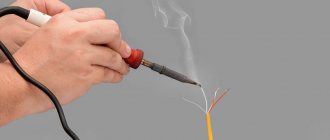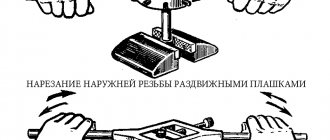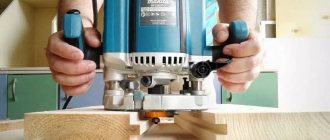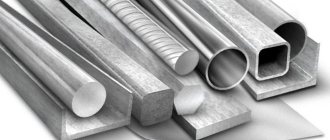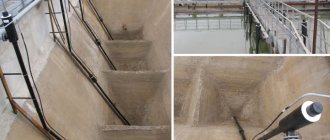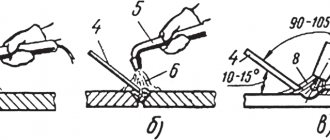Types of rolled metal
Today it is simply unrealistic to imagine modern construction without the use of rolled metal. Various types of rolled metal are widely used in the construction of foundations and reinforcement of walls, installation of floors and much more.
All rolled metal should be divided into two groups: ferrous and non-ferrous rolled metal, more details of which can be found on this website. For the production of ferrous metal products, mainly steel and cast iron are used, and for the production of non-ferrous metal products, copper, aluminum, bronze, brass and various alloys are used.
What rolled metal is and what its types are today will be discussed in the article.
What is it: types, classification and application
Rolled metal products are products made from different metals; they are produced at a certain temperature by rolling. It is used in mechanical engineering, construction and other industries. All kinds of materials are suitable for production (tin, copper, aluminum, stainless steel, alloy and black steel, etc.). The processing process is carried out in two stages:
- The first is the smelting of iron and cast iron.
- The second is the production of rolled products.
Upon completion of manufacturing and testing for compliance with established standards and norms, everything should be ready for sale in the country’s markets.
What is this more specifically?
Roughly speaking, this is a piece of alloy that can be an independent element. For example, a shed can be covered with a sheet of iron. But it is quite suitable as a raw material for the production of various products. for example, stamped body parts for cars are made from the same thin steel.
Main types
There are several most common ones. Classification is carried out according to several criteria. By type of finished products it can be:
- varietal;
- sheet;
- pipe;
- special (shaped).
Which happens depending on the production technology:
- cold-rolled (first, a workpiece is formed by etching, and then shaped using several shafts);
- hot rolled (the workpiece is formed by high heating of the alloy or steel).
Depending on the metal:
- black (cast iron);
- non-ferrous (alloys);
- stainless (not subject to corrosion).
Varieties and main types of rolled metal that are popular today
The following types are in greatest demand among consumers:
- Channels. They find their application in various fields of industry, for the construction of supporting and load-bearing structures. They are profiles with a U-shaped section.
- Beams. These products are in wide demand. After all, beams are used in a variety of construction works. They are made of low-alloy, carbon steel, in the form of horizontal or inclined bars.
- Fittings. Widely used for installation of reinforced concrete and load-bearing structures. This is a graded type made of steel. Has many shapes and sizes.
- Sheets. They are cold or hot rolled. Thickness and size may vary.
- Profiled sheeting. Used in the construction of walls, roofs, load-bearing structures. These are thin plates with certain stiffening ribs. During production there are several stages: cold rolling, galvanizing, priming.
- Pipes. Has many shapes and sizes. It is used in almost all areas of industry and life.
Equipment
To understand how different parts are made, you need to know what equipment is used during technological processes. Rolling is carried out on the following machines:
- Wire mechanisms. With their help, wire with a diameter of up to 10 mm is produced.
- Slabs - designed for processing long rectangular products.
- Bloomings - used in the manufacture of large square products. In addition to square sections, mechanisms can make blanks of various shapes.
- Pipe rolling are industrial machines that are used to create metal pipes of different diameters.
Before rolling begins, the metal is heated using industrial furnaces and fed through cutting shears to rotating shafts.
Varietal and shaped type: types of profiles
Rolled products are so called because the profiles are made on special machines. Represents: shafts, bushings, gears, and other products necessary in industry and transport construction. There is also sheet and shaped (special). The latter includes the following:
- hexagonal;
- square;
- rectangular;
- corners;
- channels;
- beams;
- rails.
Corner
The corner profile has an L-shaped section. Its shelves come with the same or different lengths. They are called equal-flange and unequal-flange corner profiles. Products are made by hot rolling or bending sheet steel. Corners are used as elements subject to axial loads - tension and compression. To obtain a combined section, you can connect several corners together.
The parameters of metal corners are regulated by state standards:
- GOST 8509-93 - equal-flange hot-rolled profile;
- GOST 8510-93 - unequal flange hot-smooth profile;
- GOST 19771-93 - equal flange bent profile;
- GOST 19772-93 - unequal bent profile.
Available with shelf widths from 20 to 250 mm. They are used to strengthen window and door openings during masonry, for the manufacture of wickets, gates, in the construction of stairs, etc.
Sheet metal: features
Today, its demand has increased in the markets. There are many ways to make it. Mainly made from alloys and non-ferrous metals. They are distinguished depending on the method of manufacturing the products. It is divided into hot-rolled and cold-drawn. The scope of application of the sheet depends on how it is made. Such products are in demand in construction and industrial production. Steel plates are in greatest demand. After all, they have a number of advantages:
- strength;
- long service life;
- resistance to temperature changes and mechanical influences from the outside;
- due to the galvanized surface - corrosion resistance.
The product is manufactured by changing the temperature regime. The profile is deformed under the influence of cold or hot temperature. Popular types include the following:
- Smooth. Always in demand. The range is wide, depending on the wall thickness.
- Galvanized. Among the positive characteristics, it is worth highlighting resistance to corrosion, high temperatures, and ultraviolet radiation. The price of the sheets is relatively low, and the service life is significant. They can be subjected to various treatments. Widely used in roofing, mechanical engineering and industry.
- Perforated. They have holes of various shapes (round, square, rectangular). Can be used as decoration for building facades or in construction.
- Stainless. The products have many advantages: they are not subject to corrosion, are resistant to high temperatures, are plastic, durable and visually attractive. They are used in almost all areas of life (railings, spans, commercial equipment).
- Decorative. Today they are produced in various shapes (corrugated, mirrored, polished, textured).
- Corrugated sheets. This is a special product with good steel thickness. They are used for wall cladding and for the construction of fences from the inside.
Priorities, characteristic qualities
The global role of rolled ferrous metals
in economics and industry is due to a number of its priority features:
- high performance properties - this type of rolled metal has a significant service life;
- strength and reliability - ferrous metal products are practically not susceptible to the harmful effects of corrosion or the influence of other negative environmental factors;
- wear resistance, durability of use.
Ferrous metal products are one of the most popular materials in various areas of industrial construction. Almost all spheres of the economy and production are related to it.
At the present stage, technological processes for the production of ferrous metal products are rapidly developing, becoming more advanced, and the range of manufactured products is rapidly and steadily growing.
Basic parameters and pipe profiles
Classification occurs according to several criteria. They are divided depending on the diameter, size, material of manufacture, method of connection, type of insulation, cross-sectional profile.
Kinds
- Steel. The advantages of these products include a long service life (about 25 years) and reliability, the disadvantages are huge weight and lack of corrosion resistance. They are manufactured galvanized, welded, cold and hot rolled, cold drawn, profiled.
- Galvanized. They are able to withstand various temperature changes. Not subject to corrosive influences. The cost, of course, is much higher than usual, but the quality is several times better.
- Copper. The advantages are durability (service life reaches 100 years), resistance to corrosion and high temperatures. Cons: high price, low strength, difficult installation.
- Cast iron. Depending on the strength, there are black, gray and nodular graphite. They are reliable, corrosion-resistant, but not so durable and require installation costs.
- Metal-plastic - made of plastic and metal. Today they are the most popular on the market. They have many positive characteristics: price, quality, ease of installation. The disadvantages include poor resistance to temperature changes.
In addition, according to the method of application, pipes can be:
- electric welded;
- water and gas pipelines;
- casing;
- seamless;
- square or rectangular for making frames.
Steel channel: types of metal
This is a U-shaped profile. The structure can withstand large vertical loads. Construction and mechanical engineering cannot be done without them. In any industry it is necessary to support and reinforce various structures. Divided:
- hot rolled parallel;
- with sloped internal edges;
- ordinary accuracy (B);
- increased rolling (B);
- bent.
They will be useful in any field of activity. The scope of application depends on their size. 10 is in demand when installing columns, walls, and rod structures. 14 is used to support load-bearing elements. 20 – for strengthening bridges, reinforcing floors of multi-story buildings.
Rolled metal: areas and applications
In the modern world there are in almost every area of construction, industry and economic activity. For example, roll is necessary for the construction of high-rise buildings, industrial complexes, as well as for the production of machine tools, cars, airplanes, and individual furniture.
Recently, decorative has become increasingly popular. Compositions are made from it, buildings, furniture, and various structures are decorated with it. Products made of ferrous and non-ferrous metals are no less in demand. They are used as decoration not only in private households, but also in offices and parks.
Products are also necessary for fastening rails, preventing soil sliding (for this there is a special type of rolled product - shunt), water, heat and gas supply to residential buildings and non-residential buildings. Today, not a single sector of human life can do without them.
What is most valued on the market
In the world of modern technology, the counter is overflowing with an abundance of parts, but the most in demand are:
- sheet metals;
- beams;
- pipes;
- corners.
The buyer always carefully chooses the manufacturer. After all, price, quality and warranty periods depend on the reputation of the enterprise. Products from China are not always durable; they attract some customers only with a price (below the market price). But after purchasing, you may encounter the problem of low-quality goods and lost money.
What to do to buy high-quality rolled metal of the correct classification
It is necessary to contact trusted companies.
Products must comply with all established norms, standards and GOST requirements. All of them are certified according to the following parameters:
- size, length, assortment;
- chemical composition of steel, alloys;
- compliance with technical conditions during production.
So, what is rolled metal, types of rolled metal, their grade classification, photos and pictures you found in our article.
Contact Rosta LLC if you decide to buy devices for industrial use. We have manual and semi-automatic band saws in stock and on order, as well as pendulum, vertical and two-post units. To clarify the information you are interested in, contact the managers by phone;; 8 (800) 707-53-38. They will answer all your questions.
A400 and A500S fittings: general characteristics and differences
One of the types of rolled metal products used for various industrial purposes is fittings. This is a round metal rod with a ribbed surface. This product is produced in the form of segments of a certain length or in coils. There is also fittings with a smooth surface.
The fittings come with a smooth and ribbed surface, and are produced in the form of individual sections or in a coil.
GOST for fittings 5781-82 regulates technical conditions. GOST 10884-94 was created for reinforced reinforcement. The main area of application is construction. This type of rolled metal is used to reinforce reinforced concrete products and create frames. The full range of fittings is divided into VI classes. The most popular types of products (A400 and A500C) belong to class A III. The reinforcement has a profile with two ribs and a transverse projection.
Reinforcement: range of reinforcement, weight, length, calculations, GOST standards (read more)
In many ways, the characteristics of the A400 and A500C fittings are identical, which determines their belonging to the same class. But differences in the chemical composition, namely less carbon and more alloying additives, give the A500C type a greater degree of flexibility, which contributes to the formation of a more durable seam when using arc welding. The letter “C” indicates the possibility of using this type of welding.
In construction, reinforcement of classes I–IV is more often used. For the foundation, the diameter of this metal product must be at least 10 mm. In mine construction, for the reinforcement of bridges and underground structures, products of classes V–VI are used. The class table contains a range of A500C reinforcement for strengthening reinforced concrete structures.
Note! When replacing grade A400 with A500C, due to the possibility of using electric arc welding and improving the quality of joints, the consumption of reinforcement is reduced and the strength of the concrete structure is increased.
The A400 and A500C fittings belong to the same class, so most of their characteristics are the same.
Read the continuation of the article on the next page. To move to the next part of the article, use the page navigation numbers.

